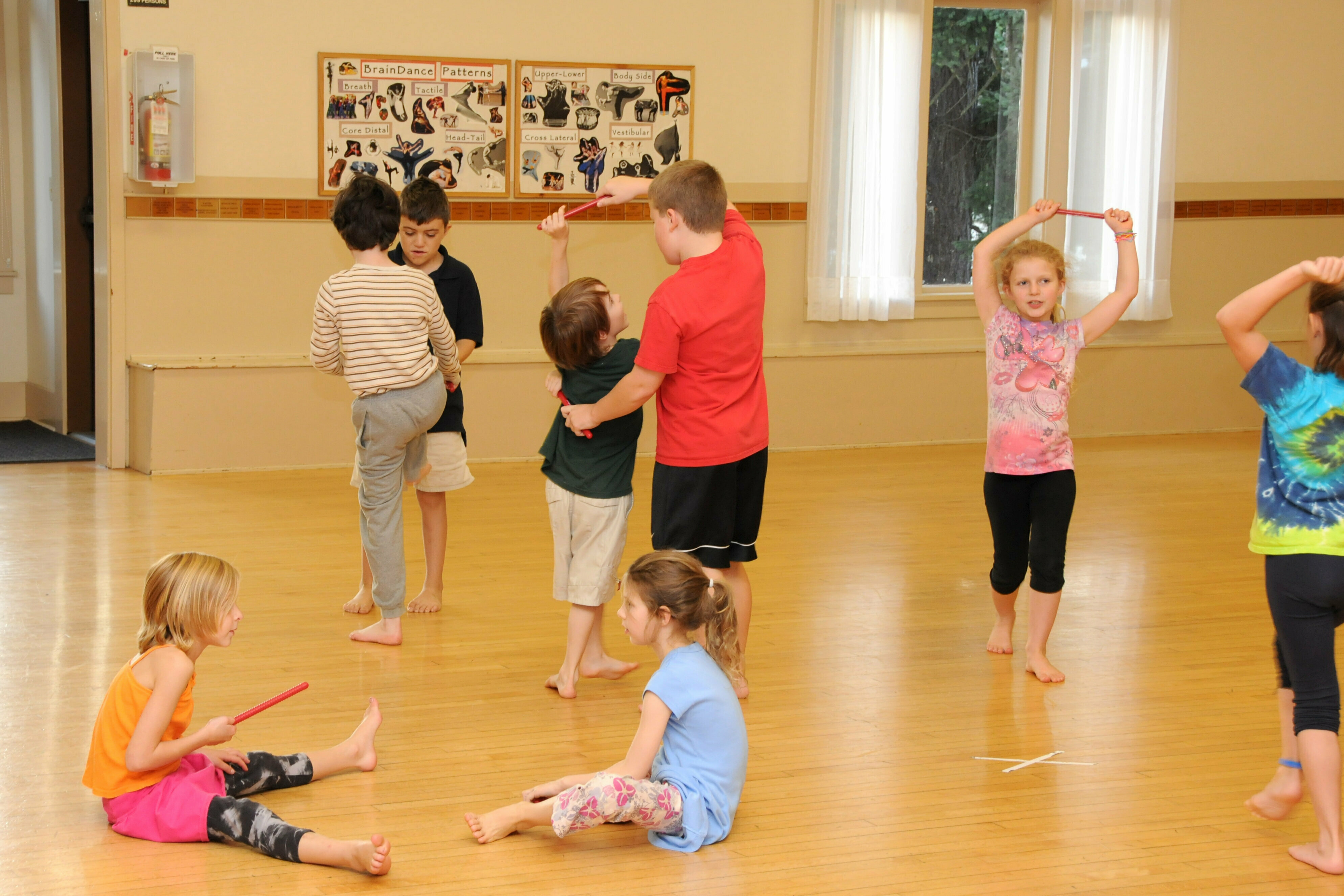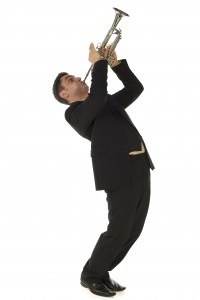
It is estimated that shoulder injuries are one of the most common injuries among the general public and the third most common complaint among instrumental musicians.A shoulder injury can happen to a young athletic person as well as an older out-of-shape person. The shoulder is a complex structure designed for great mobility and flexibility. We can move our shoulders into 16,000 different positions! The price we pay for this flexibility is vulnerability.
Shoulder injury is high among musicians because most of us work with our arms elevated. Prolonged use of the arms at or above shoulder height results in wear and tear in the shoulder.
A shoulder injury can cause pain in the shoulder, arm, hand and neck because the muscles that work the shoulder and neck work together. As a group they are called the shoulder girdle.
The trapezius muscles are two large triangle shaped muscles that cover the back of your neck, top of your shoulder and your upper back. These are the muscles we use to shrug our shoulders. It helps to move the shoulder blade and allows us to raise our arms overhead. Many of us have tension and discomfort in this area.
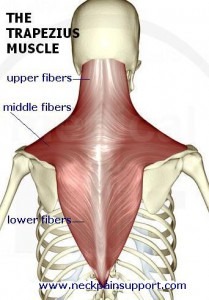
credit : http://www.stack.com/
The rotator cuff muscles are made up of both muscles and tendons. They attach to our shoulder blades and the top of our arm bones wrapping around our shoulders. These help hold the humerus bone in the shoulder socket and provide stability and strength. They are essential for upper arm movement and to move our arm and shoulder blade together for overhead activities. We need them to turn our arm inward or outward, as in swinging a tennis racket, and to turn our upper arms so that we can move the palms of our hands up or down. The rotator cuff muscles can be injured when we rotate our arms out to the side too much or lift a heavy bag overhead.
The deltoid muscles cover the top and outside of the shoulder. This muscle group helps us raise our arms up in front of our bodies or out to the side.
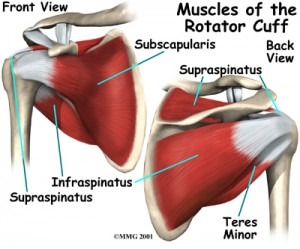
credit : http://wavesport.ning.com/
The muscles of the shoulder girdle work in concert with the bones of the shoulder creating a stable base for movement. The shoulder joint allows for an extraordinary range of motion but it is easily injured. When all of the muscle groups are healthy and in proper balance they work smoothly together almost in a rhythmic sequence. But the need to hold our instruments up in awkward postures for long period of time can stress parts of the shoulder girdle.
The following injuries can occur in musicians and anyone who works with their arms elevated.
Tendinitis
The most common cause of shoulder pain is tendinitis. Repetitive use of the arm at or above shoulder level causes reduced blood supply, which results in microscopic tears and inflammation. An inflamed tendon is called tendinitis. In young people this may occur due to their activities. In older people it is often degenerative.
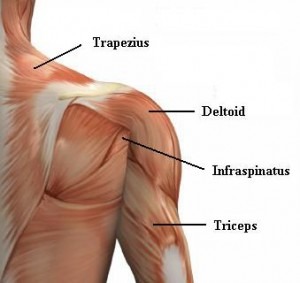
credit : http://www.truefitnessfanatic.com/
Bursitis
Buras are fluid filled sacs that cushion movement of tendons and ligaments. They reduce friction between ligaments and bones and facilitate smooth movement. But when the arm is held out from the body or overhead for long periods of time the rotator cuff and bursa in the shoulder joint are squeezed resulting in inflammation of the bursa. Inflammation can also occur over time if you don’t warm up. Bursa may become fibrous and thickened due to chronic wear and tear causing bursitis.
Pain may radiate down the upper arm and restrict movement especially if it involves lifting your arm.
Repetitive rotation of the arm towards the body and back can result in a pinched bursa. String players should avoid rotation of the right shoulder while bowing. Cellists, turn your instrument to bow on the A string rather than rotating your shoulder or twisting your torso.
Violinists, percussionists, and conductors are more likely than other musicians to develop performance related problems with shoulders since their arms are elevated at shoulder height for long and sometime continuous periods of time. Percussionists who play timpani, mallets, bells or drum-set may be more at risk due to their widespread motions, combined with elevated shoulder positions. Keyboard players who reach or stretch to the side are also at risk. Shoulder tendinitis can also occur if you engage in other activities that require you to hold your arms above your heads.
Take time to lower your arms whenever you are able. Keep your shoulders down and in neutral or natural positions. Avoid twisting, cocking or rotating your shoulders. Keep tension at bay by rolling or shrugging your shoulders and stretching your pectoral, trapezius and neck muscles.
Be vigilant about hitching up shoulders. Experiment with the angle and height of your instrument as well as the heights of your stool and chair. There are many music companies that sell stands, straps and harnesses that support the entire weight of instruments, thereby allowing the hands and shoulder to be free. Violinists should be careful not to hold the bow arm too high especially at the tip of the bow. Pianists and harpists watch for hunched postures, which result in drooping forward sloping shoulders.
Save your shoulders. Heavy brass instruments should be lowered frequently. String players should avoid big arm circles and crash landings. Stay near the string. Violinists avoid hiking your shoulder up to hold your instrument. Experiment with shoulder pads and chin rest heights.
Percussion and timpani players should experiment with chairs, higher stools and building up shoes for greater height. Try longer sticks to avoid any unnatural leaning or reaching for instruments.
Shoulders can also be injured carrying heavy instruments. Consider shoulder straps or wheels for your instrument case and build up case handles.
Shoulder injuries if caught early respond to conservative treatment including ice, rest, and anti-inflammatory medication. The good news is that fewer than five percent ever require surgical referral. Ignoring shoulder issues, though, can result in long-term and chronic issues.
“This is an excerpt from Playing (Less) Hurt by Janet Horvath, published by Hal Leonard Books”

